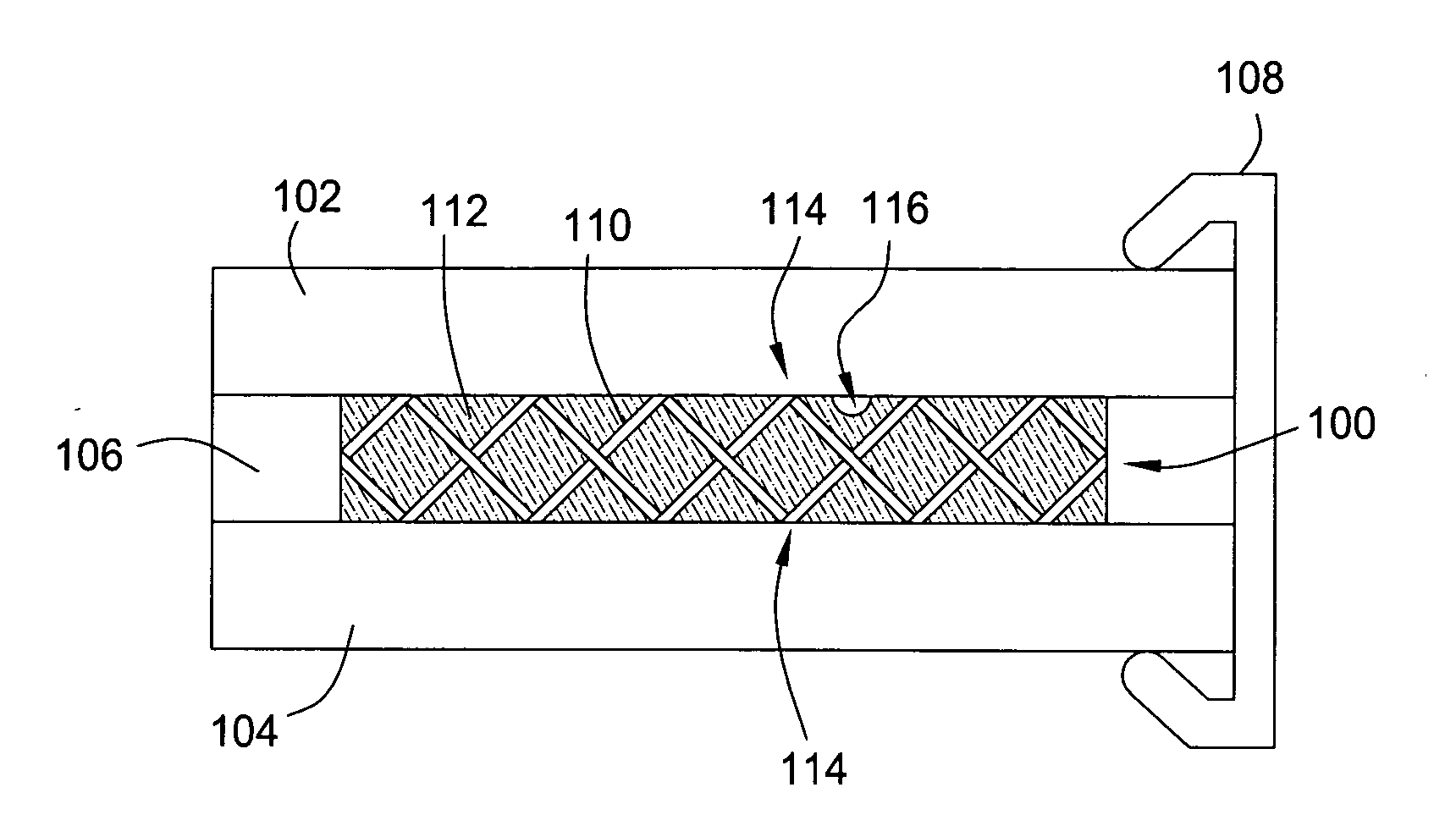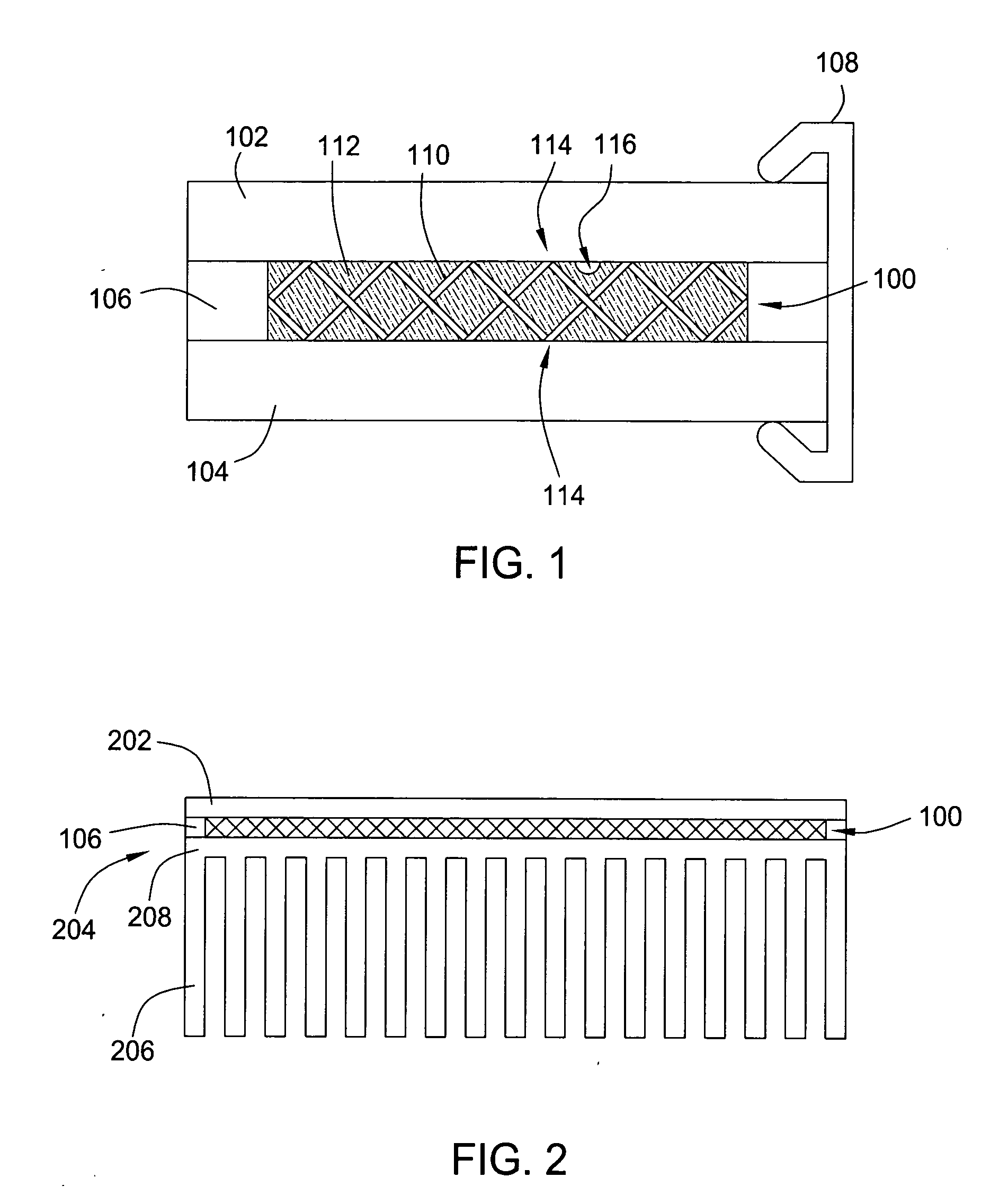Heterogeneous thermal interface for cooling
a heterogeneous thermal interface and cooling technology, applied in the field of thermal interfaces, can solve the problems of thermal runaway, limited chip cooling, and general limited thermal conductivity of conventional pastes
- Summary
- Abstract
- Description
- Claims
- Application Information
AI Technical Summary
Problems solved by technology
Method used
Image
Examples
Embodiment Construction
[0013]FIG. 1 depicts a cross-sectional view of one embodiment of a thermal interface 100. The thermal interface 100 is disposed between a heat source 102 and a heat sink 104. The heat source 102 may be any heat source, including but not limited to an integrated circuit (IC) chip. The heat sink 104 may be any heat sink, such as a cold plate of air-cooled fins, water-cooled fins, heat pipes, radiators, thermal spreaders, and the like. The thermal interface 100, heat source 102 and heat sink 104 may be held together in an assembly by any suitable means, such as bonding, adhering, clamping, brackets, fixtures, and the like. In the embodiment depicted in FIG. 1, the heat source 102, the heat sink 104, and the thermal interface 100 are held together by at least one clamp 108.
[0014] The thermal interface 100 is typically formed in the range of from about 50 to about 200 microns thick and generally includes a thermally conductive, heat transfer liquid 112 disposed in a mesh 110. The liquid...
PUM
| Property | Measurement | Unit |
|---|---|---|
| thick | aaaaa | aaaaa |
| thick | aaaaa | aaaaa |
| gap sizes | aaaaa | aaaaa |
Abstract
Description
Claims
Application Information
 Login to View More
Login to View More - R&D
- Intellectual Property
- Life Sciences
- Materials
- Tech Scout
- Unparalleled Data Quality
- Higher Quality Content
- 60% Fewer Hallucinations
Browse by: Latest US Patents, China's latest patents, Technical Efficacy Thesaurus, Application Domain, Technology Topic, Popular Technical Reports.
© 2025 PatSnap. All rights reserved.Legal|Privacy policy|Modern Slavery Act Transparency Statement|Sitemap|About US| Contact US: help@patsnap.com


